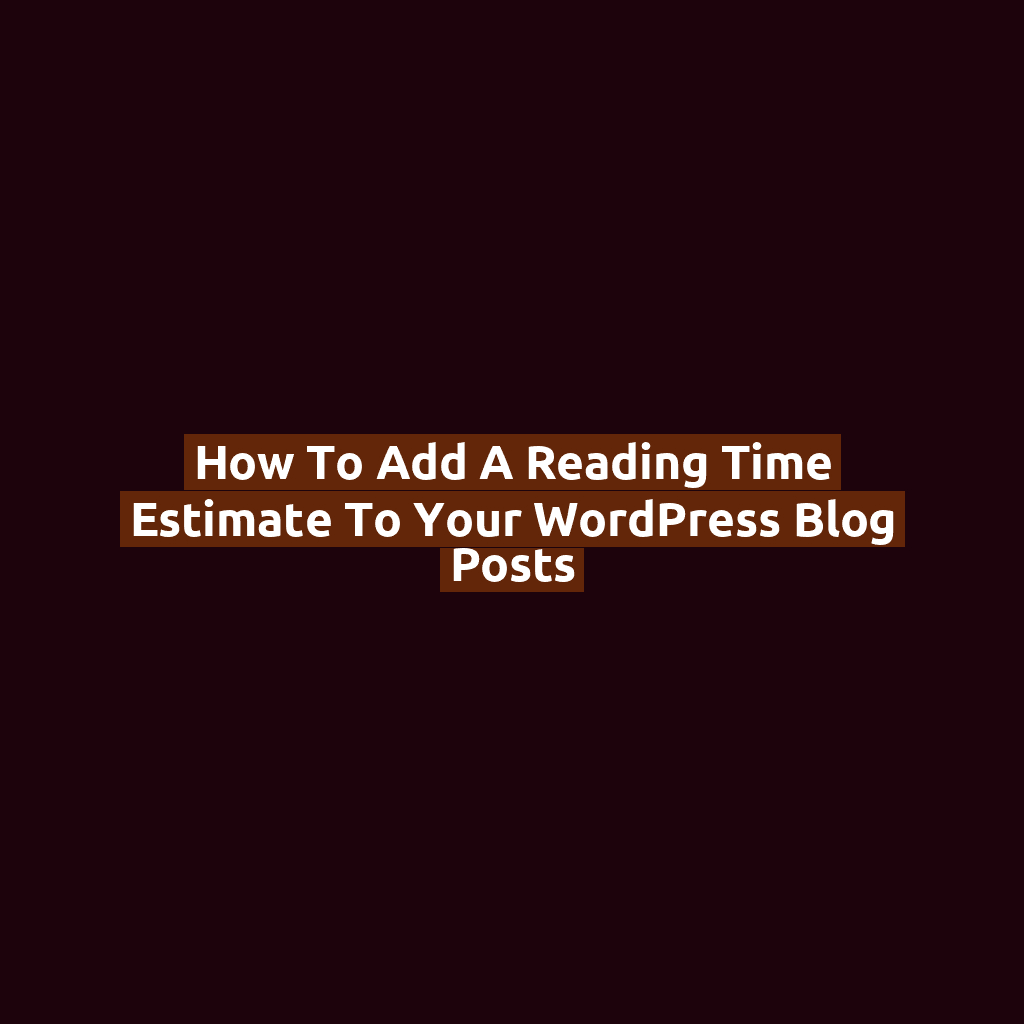How to Add a Reading Time Estimate to Your WordPress Blog Posts

Why Add a Reading Time to Your Posts?
Adding a reading time estimate enhances user experience and boosts engagement. It helps readers decide if they want to dive in now or bookmark for later. Plus, it’s a nice touch for content-heavy blogs.
You’ve probably seen something like this:
🕒 Reading time: 4 minutes
Let’s add that to your WordPress posts — the clean, developer-friendly way.
Step 1: Add the PHP Function to Calculate Reading Time
Edit your theme’s functions.php file or a custom plugin and add:
function get_reading_time($post_id = null) {
$post_id = $post_id ?: get_the_ID();
$content = get_post_field('post_content', $post_id);
$word_count = str_word_count(strip_tags($content));
$reading_time = ceil($word_count / 200); // 200 wpm average
return $reading_time . ' min read';
}
What It Does: It calculates word count, divides by 200 (average reading speed), and rounds up.
Step 2: Display Reading Time in Your Theme
Now, insert the reading time into your post template. Edit single.php, content.php, or wherever you want it to appear:
<div class="reading-time">
🕒 <?php echo get_reading_time(); ?>
</div>
Put it above the post title, below it, or right before the content — wherever it fits best visually.
Optional: Style It with CSS
.reading-time {
font-size: 14px;
color: #666;
margin-bottom: 10px;
}
You can also add an icon, change the wording, or use a bold badge style.
Bonus: Add Support for Custom Post Types
To show reading time on custom post types (like articles or projects), just make sure you call get_reading_time() within the loop on their templates too.
Alternative: Use a Lightweight Plugin
Prefer plugins? Try:
- Reading Time WP – Automatically inserts reading time into posts
Still, custom code is faster, lighter, and gives you full design control.
Conclusion
Adding a reading time estimate to WordPress is a subtle but effective UX boost. It’s easy to implement, improves readability, and shows respect for your readers’ time. Whether you’re running a blog, magazine, or tutorial site — this small detail goes a long way.